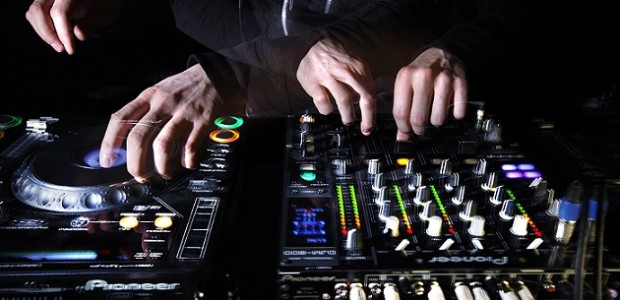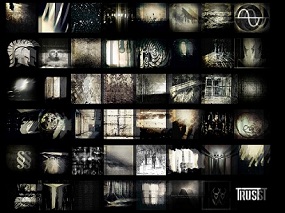Extension _ Interview with Inigo Kennedy
Do you mind telling us about your first experiments in production? I know you were using cassettes for a long time in the early days, but were you fancy enough to use a 4 track, or were you more of an old school double deck kinda guy?
Definitely an old school double-decker.
We’d have contests in the playground to check each other’s tape edits out; chopping up the charts (there was plenty of nice old school electro and hip-hop around in those days – Mantronix, Cookie Crew, Doug E Fresh, Eric B & Rakim and so on) and also splicing up edits of tracks with other found sounds and dialogue (Derek & Clive vs. Star Wars story tapes sticks in mind).
Making my own music started in my early teens I guess. I had a bunch of tape deck tricks, some guitar fx pedals, a few DIY circuits (oscillators, filters, mixers), used some mics and found sounds. I was building up music by overdubbing layers (and shocking amounts of hiss). I also had a BBC B+ computer with a Music 500 box which I programmed fastidiously. The Music 500 was a curious beige box of hardware that used a proprietary music composition language called AMPLE (similar to Forth) and I meticulously programmed tracks from the original sheet scores of Jean Michel Jarre and classical music I’d borrowed from the local library. Those were my first experiences of designing sounds too since you could program the oscillators, envelopes, etc. It turns out it wasn’t a bad way to learn a lot about procedural programming and reading sheet music too.
Later on I got my first PC running Windows 3.0 and got into trackers and sequencing. I used the DOS based Voyetra Sequencer Plus Gold for years as a MIDI sequencer along with a Roland D-50, a couple of primitive ART and Zoom effects racks, a DIY mixer (which has about six channels and one whole aux send on each channel) and then eventually, the killer in the arsenal came along; a Casio FZ-1 sampling keyboard.
I made a lot of my first releases on not much more than that set up and it was all ‘mastered’ to cassette tapes; sometimes I even splashed out on metal cassettes! Ironically I had to copy from the cassettes onto DATs (using borrowed machines) as that was all the cutting houses would use. Eventually I got a Behringer Eurorack mixer, stepped up to using Logic (when it was still on PC) and the studio started to grow with more and more synth hardware (and eventually a CD burner). I still always avoided the obvious techno machines and went for more obscure, digital machines like the Nord Modular, Kawai K5000, Yamaha FS1-R, Waldorf Wave XT and so on. I liked the challenge as much as the uniqueness.
Assuming of course that you ever got a decent pay check for selling records / DJing at some point, what was one of the first things that you treated yourself to in the studio?
I guess the biggest thing I treated myself with was the Allen & Heath GS3000 desk. It replaced the two Behringer Eurorack mixers I had at that point and it was a huge investment but an amazing bit of kit and still very much is the beating heart of the hardware set up for sure. It’s a 32 channel desk but it has amazingly flexible in-line architecture with dual faders and dual paths so in effect it’s a 64 channel desk and it’s fantastic to have everything up on the channels and ready to go. It happens to sound and feel amazing too.
Anyone that has been on your website knows that it’s a bit of an Inigopedia haha. I like the way that you have all the old bits of equipment that you had listed on it. Have you still got all the hardware that isn’t marked as “sold, donated or died”? You must have a huge studio space. Would you mind talking a little about your production set-up?
Yeah pretty much all. There are a few bits in the attic like the FZ-1 (it weighs about 20Kg and I’ve opened it up a few times – it is built like a tank and totally full of circuit boards, really early digital stuff).
A lot of the hardware is racked, so doesn’t actually take up as much physical space as it might seem. I’m not too bad at making up cables or putting MDF together so everything is pretty neat and compact. To be honest the hardware set up isn’t getting used so much now. For most music making these days I’m more or less centred around a small desk with a Lenovo laptop running Windows 7, an NI Audio 8 (and Traktor Scratch), NI Maschine and a Korg MicroKONTROL.
Occasionally using the Jazz Mutant Lemur.. and more so now Lemur on an iPad Mini. There’s been such a quantum leap in software in the past five or so years that it’s taken music making back in so much more of an organic hardware direction in both sound and controllability but with so much more flexibility too. I still have not found any way to replace the immediate way I can jam with an analogue desk though – the way you can have access to levels, eq and effects on every channel at the same moment and without thinking just grab controls and do something. That’s the purest form of music making I think; the equipment becomes like an extension to you.



ICN
Feb 12. 2013
Great interview. Love it!
David
Feb 28. 2013
This is an incredible interview. Lots of insight. great work!
I’ve always rated Inigo since his Missle/Zet days and i’m glad to see he is still in the game and evolving.